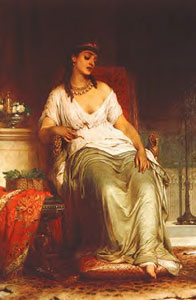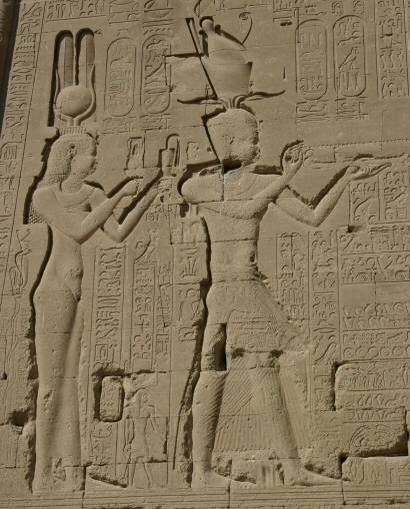 In Professor Duane Roller’s new biography of Cleopatra, he theorizes there might have been some small part native Egyptian blood flowing through Cleopatra’s veins. I hope that is true.
In Professor Duane Roller’s new biography of Cleopatra, he theorizes there might have been some small part native Egyptian blood flowing through Cleopatra’s veins. I hope that is true.
But even if it weren’t, there is no way to exaggerate the influence of Hellenistic culture in Alexandria. Nor can we ignore that Macedonian Greeks comprised the ruling class into which Selene was born. It is plausible that the historical Cleopatra Selene identified primarily as Macedonian Greek.
However, because Selene’s mother was also fierce nationalist, I chose to have her identify primarily as an Egyptian. Her mother, Cleopatra, identified herself primarily as the Queen of Egypt. She honored the native gods and customs, and was the first of her dynasty to learn the language of Egypt (along with several more besides).
By Selene’s time, Alexander’s old empire had crumbled–his remains kept in the Soma in Alexandria–and the Ptolemaic cosmopolitan empire in Egypt had long been more ascendant. This synthesis of cultures–not to mention the multicultural nature of Alexandria itself–didn’t seem to trouble Cleopatra and may even have been a source of pride. In fact, at the later end of Cleopatra’s rule, she adopted the title of Philopatris (lover of her country). Therefore I portrayed Selene to be an Egyptophile like her mother.
I believe this was the right choice for my novels because when Selene was Queen in Mauretania, she used her coins to glorify not the Hellenistic Ptolemaic dynasty alone but also the Egyptian Pharonic legacy of her homeland with images of crocodiles, ancient Egyptian gods. This is in striking contrast to more usual Ptolemaic coinage which usually bore the Greek images of cornucopiae and the Ptolemy Eagle on their reverses. (See Nina H. Berkhout, Cleopatra VIII Selene, Last of the Ptolemaic Queens.)

